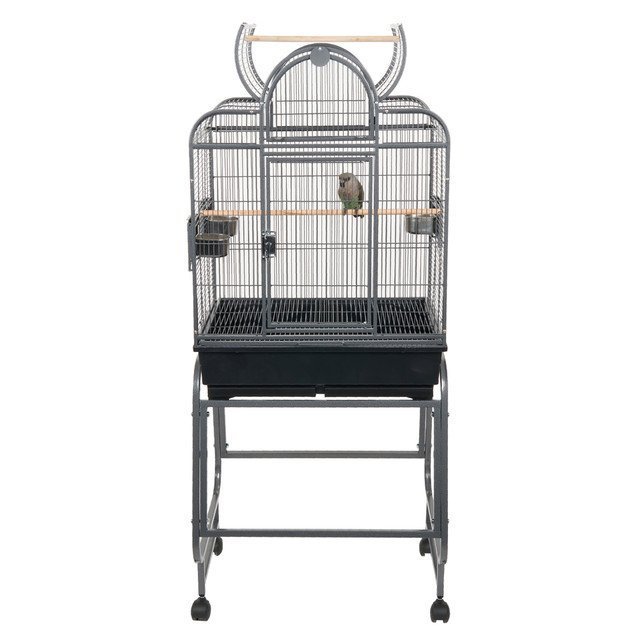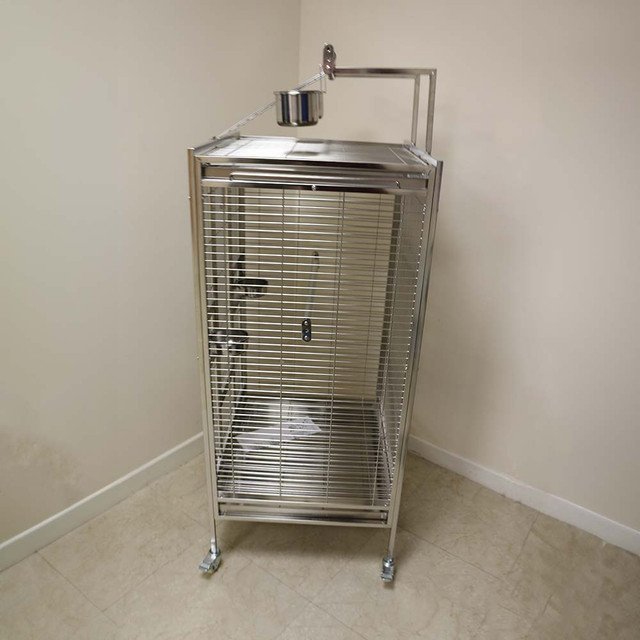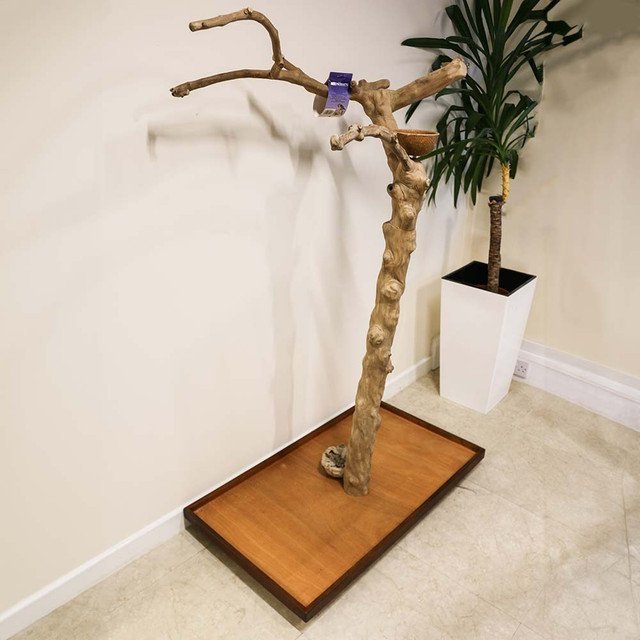🏗️ Design and Construction Components/Area Indoor Parrot Aviary with Housing
1. The Aviary (Flight) Area
-
Area Indoor Parrot Aviary with Housing
Size/Dimensions: African Greys are large parrots that need room to fly. A common commercial example of this type of setup is roughly 2.1m W x 1.6m D x 2.1m H (or 7 ft W x 5 ft D x 7 ft H) for the flight area, plus the attached housing unit. If you are building custom, the bigger the better, ensuring a minimum of 3-4 full wingspans of space for flight.
-
Bar Spacing & Wire: Use a heavy gauge, non-toxic wire mesh (e.g., 14-gauge or higher) with a maximum spacing of 1″ (2.5 cm) to prevent head/toe entrapment. Galvanized hardware cloth is often used, but ensure it is safe for parrots (check for coatings like zinc, which can be toxic; stainless steel is the safest, albeit most expensive).
-
Flooring: The floor must be non-porous and easy to clean and disinfect.
-
Best Options: Polished concrete, tile, or sealed laminate with a drainage system if possible (for hosing down).
-
Avoid: Carpets or bare wood, as they trap bacteria and moisture.
-
-
Safety Porch / Double-Door Entry: This is essential to prevent escapes. It’s a small enclosed area between the main room door and the aviary door, creating an airlock. This is crucial for breeding birds that can be wary when you enter.
2. The Housing/Shelter Area (The ‘Birdhouse’)
This area is smaller, enclosed, and provides security, privacy, and warmth. For breeders, this is where the nest boxes would be placed, and where the birds retreat at night or during nesting.
-
Connection: The housing unit should be directly accessible from the aviary, typically through a small opening or ‘pop-hole’ that can be closed.
-
Insulation & Heat: It should be insulated and draft-proof. In colder climates, install a safe ceramic heat emitter or other heat source to maintain a safe temperature (around to / to is ideal for tropical birds).
-
Lighting: Since this area is enclosed, install a full-spectrum UV light source specifically designed for birds to promote Vitamin D3 absorption and overall health. Place perches at varying distances from the light source.
-
Nesting: Place your breeding nest boxes securely inside the shelter area, ensuring they are easily accessible for your checks but secure from the birds.
3. Environmental Control & Hygiene/Area Indoor Parrot Aviary with Housing
These factors are vital for an indoor setup, especially for dander-producing birds like African Greys.
-
Ventilation & Air Filtration: Parrots produce fine dander and dust. A high-quality air filtration system (e.g., HEPA filters or an exhaust fan system) is necessary to maintain air quality and prevent respiratory issues for both birds and humans.
-
Cleaning Access: Design the aviary to be walk-in and ensure all surfaces are washable. Gloss enamel paint on walls can make cleaning easier.
-
Feeding Hatches: Install swing-out feeder doors to replenish food and water without having to fully enter the aviary, reducing bird stress and escape risk.
4. Enrichment and Furnishings
-
Perches: Provide a variety of natural wooden perches of different diameters (thicknesses) and textures (e.g., Manzanita, Eucalyptus, or coffee wood) to exercise the birds’ feet and prevent Bumblefoot.
-
Foraging and Toys: Incorporate plenty of things to climb, chew, and destroy. African Greys are highly intelligent and require constant mental stimulation. Toys should be rotated frequently.
-
Water Feature: A bird-safe fountain or misting system can help with feather health and provide bathing opportunities.
-
Non-toxic Materials: Ensure all construction materials, including wire, lumber (untreated pine is common), paint, and sealants, are certified non-toxic and bird-safe.
Are you looking for more detailed information on sourcing bird-safe construction materials or specific enrichment ideas for African Greys?








Reviews
There are no reviews yet.